

|
|
Terrornauts (The)
R2 - United Kingdom - Network Review written by and copyright: Paul Lewis (29th March 2014). |
|
The Film
 Terrornauts (Montgomery Tully, 1967) 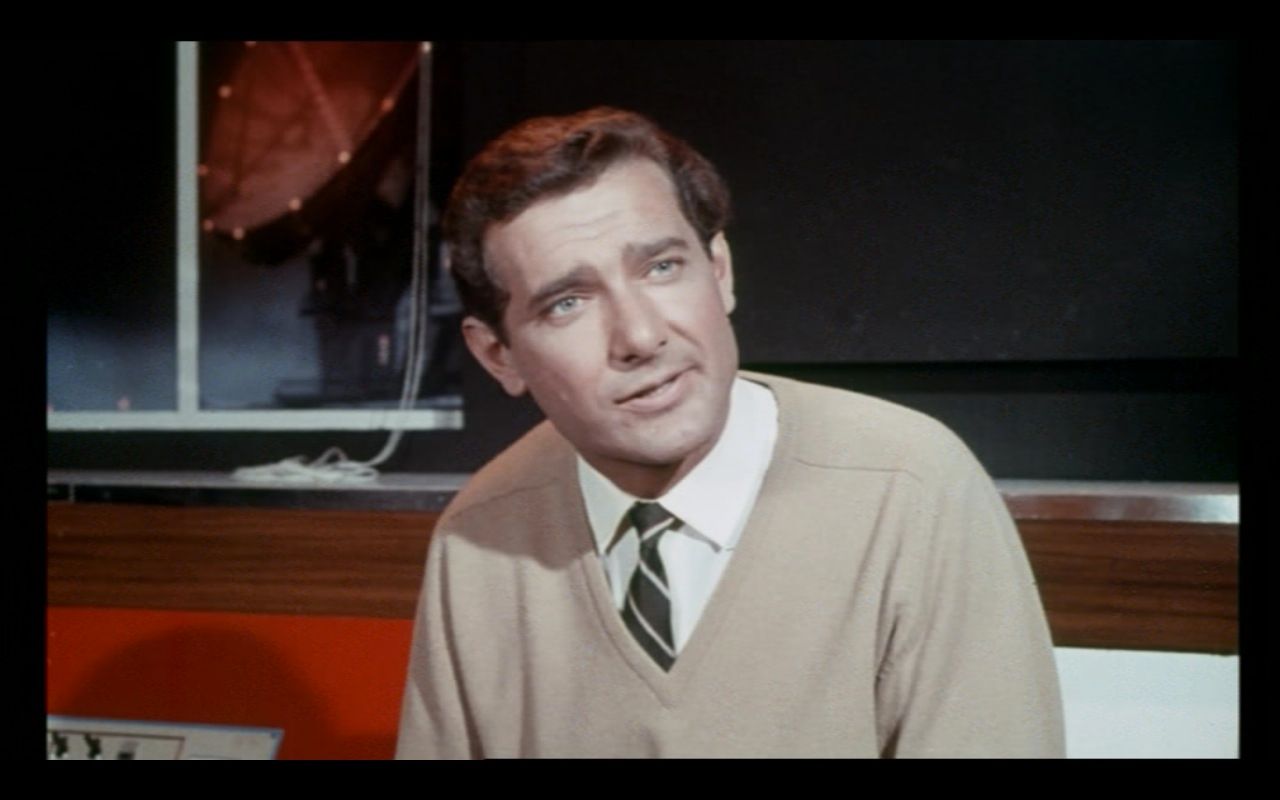 Based on The Wailing Asteroid, a novel by noted science fiction author Murray Leinster (the pen-name of William Fitzgerald Jenkins), and with a script by respected science-fiction novelist John Brunner, Montgomery Tully’s The Terrornauts (1967) should by rights be a superb British science fiction picture. However, the film is remembered (barely) as a camp footnote in British cinema of the 1960s, its approach to its material seeming quaint alongside some of the comparable youth-oriented films of the period (for example, Michael Reeves’ The Sorcerers, 1967) and within a genre that, a year later, would find its foundations shaken by Stanley Kubrick’s 2001: A Space Odyssey (1968). Based on The Wailing Asteroid, a novel by noted science fiction author Murray Leinster (the pen-name of William Fitzgerald Jenkins), and with a script by respected science-fiction novelist John Brunner, Montgomery Tully’s The Terrornauts (1967) should by rights be a superb British science fiction picture. However, the film is remembered (barely) as a camp footnote in British cinema of the 1960s, its approach to its material seeming quaint alongside some of the comparable youth-oriented films of the period (for example, Michael Reeves’ The Sorcerers, 1967) and within a genre that, a year later, would find its foundations shaken by Stanley Kubrick’s 2001: A Space Odyssey (1968).
The film was one of two alien invasion pictures produced in 1967 by Amicus: the other such film was Freddie Francis’ They Came from Beyond Space (1967). Both films were shot back-to-back between October and December of 1966, with The Terrornauts taking the lion’s share of the shared budget (see Francis, 2013: 144). Both The Terrornauts and They Came from Beyond Space represent a fairly rare subtype of British science fiction cinema, in which British characters find themselves in space. As I Q Hunter (2002) has noted, by the mid-1960s ‘the British space flight movie’ had disappeared from the screens (among the last of this subgroup was Bernard Knowles’ 1965 film Spaceflight IC-1: An Adventure in Space, in which a group of astronauts seek to colonise Earth 2), and from that point onwards ‘the only Britons who would make it into space had been kidnapped by aliens’, as in The Terrornauts and They Came from Beyond (8). The Terrornauts focuses on Project Star Talk: Joe Burke (Simon Oates), Ben Keller (Stanley Meadow) and Sandy Lund (Zena Marshall) are a team of scientists who are using a radio telescope to listen for possible transmissions from intelligent lifeforms within the galaxy. Although their project is funded under a grant from an external agency, they face opposition from Dr Shore (Max Adrian), the coordinator of the facility in which the radio telescope is based. Shore sees Project Star Talk as ‘a crackpot project’ and suggests that it should be shut down immediately. Burke, Keller and Lund also find themselves under the scrutiny of Joshua Yellowlees (Charles Hawtrey), who has been asked by the agency who have issued Project Star Talk with its grant to ensure that the money is not being wasted. Yellowlees argues with Burke over the cost of the equipment that is used by the team but, when he discovers that Burke may be on the cusp of making contact with an alien civilisation, is more than happy to wait around the facility in the hope that he might become famous. 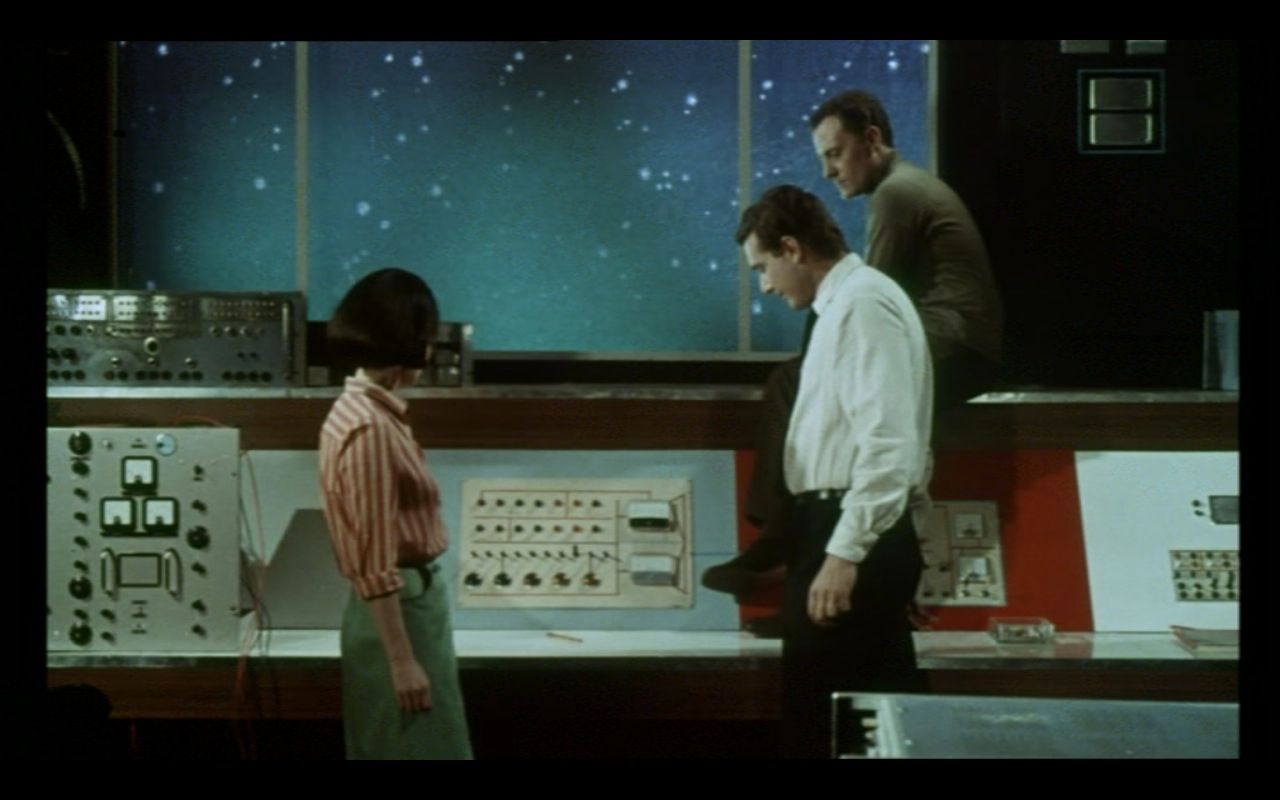 However, one evening Burke and his team receive a transmission via the radio telescope: it’s a transmission Burke has heard before, in a vivid dream of an alien landscape during his childhood. Burke decides to respond by sending his own transmission out into space. Soon, the group, including Yellowlees and the facility’s tea lady Mrs Jones (Patricia Hayes), find themselves abducted by the alien civilisation (the Terrornauts) they have contacted, and blasted into space. However, one evening Burke and his team receive a transmission via the radio telescope: it’s a transmission Burke has heard before, in a vivid dream of an alien landscape during his childhood. Burke decides to respond by sending his own transmission out into space. Soon, the group, including Yellowlees and the facility’s tea lady Mrs Jones (Patricia Hayes), find themselves abducted by the alien civilisation (the Terrornauts) they have contacted, and blasted into space.
In the tension between Burke and Shore, The Terrornauts highlights the conflict between theoretical and ‘practical’ science. Shore believes that Project Star Talk, a ‘crackpot’ waste of money, should be shut down immediately, and that ‘Expensive equipment can’t be allowed to waste its time on unscientific theorising’. For Shore, Star Talk can only ‘bring more discredit upon more reputable undertakings in the field of radio astronomy’. However, as Burke notes when Shore reminds him that Star Talk has, in a period of months, seen no progress, ‘So what? It took them centuries to find Pluto’. For Burke, Shore’s position is utterly reductive: ‘These characters only seem to care about things that you can translate into hard cash’, Burke tells his team, ‘How can I make them understand things that I don’t even understand myself?’ In the addition of Hawtrey and Patricia Hayes, the film finds some welcome comic relief (although Hawtrey has a strange habit of facing the camera and gazing just to the left of it, as if he is reading his lines whilst acting out the scene). Hayes’ earth tea lady and Hawtrey’s uptight bureaucrat, a bean-counter who struggles to comprehend the value of ideas, are interesting companions for Burke’s group of scientists: both characters function to some extent as ciphers for the audience, allowing Ben and Joe to explain Project Star Talk to us via them. For example, at one point Burke explains to Yellowlees that the signals take eighteen minutes to reach their destination – thus the long wait for a response to the signal that Burke and his team send to the Terrornauts. Additionally, and interestingly, Yellowlees also offers a counterpoint to Burke’s enthusiasm when the scientists receive a signal from the Terrornauts: Yellowlees notes that the aliens ‘could be monsters [….] They could have tentacles [….] Don’t you think it’s dangerous to draw attention to ourselves’. To this, Burke naively asserts that he believes no creature intelligent enough to send the signal could be ‘a monster’. The disc contains two versions of the film: the main presentation is the shorter rerelease edit (58:09 PAL), whilst as an ‘extra’ the disc includes the longer original version of the film (74:00 PAL).
Video
The main presentation, in colour and presented in an aspect ratio of 1.66:1 (with anamorphic enhancement), is handsome enough: contrast is good and colours are strong, and the print shows little damage. On the other hand, the longer version of the film, which is also presented in an aspect ratio of 1.66:1 (again with anamorphic enhancement), shows considerable wear and tear in the form of scratches on the print and some colour shifting, no doubt owing to the age of the materials: it’s no less than watchable, but it’s in much worse condition than the main feature. 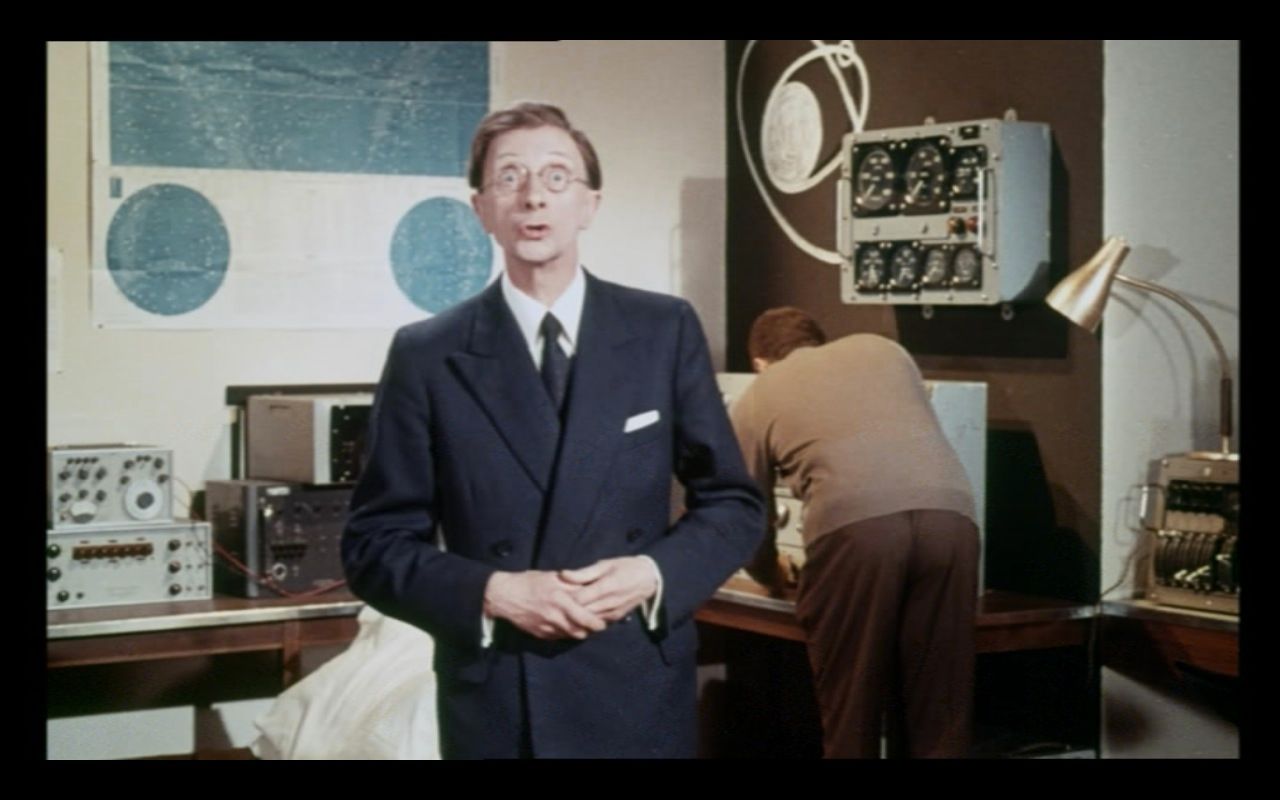
Images from the longer version: 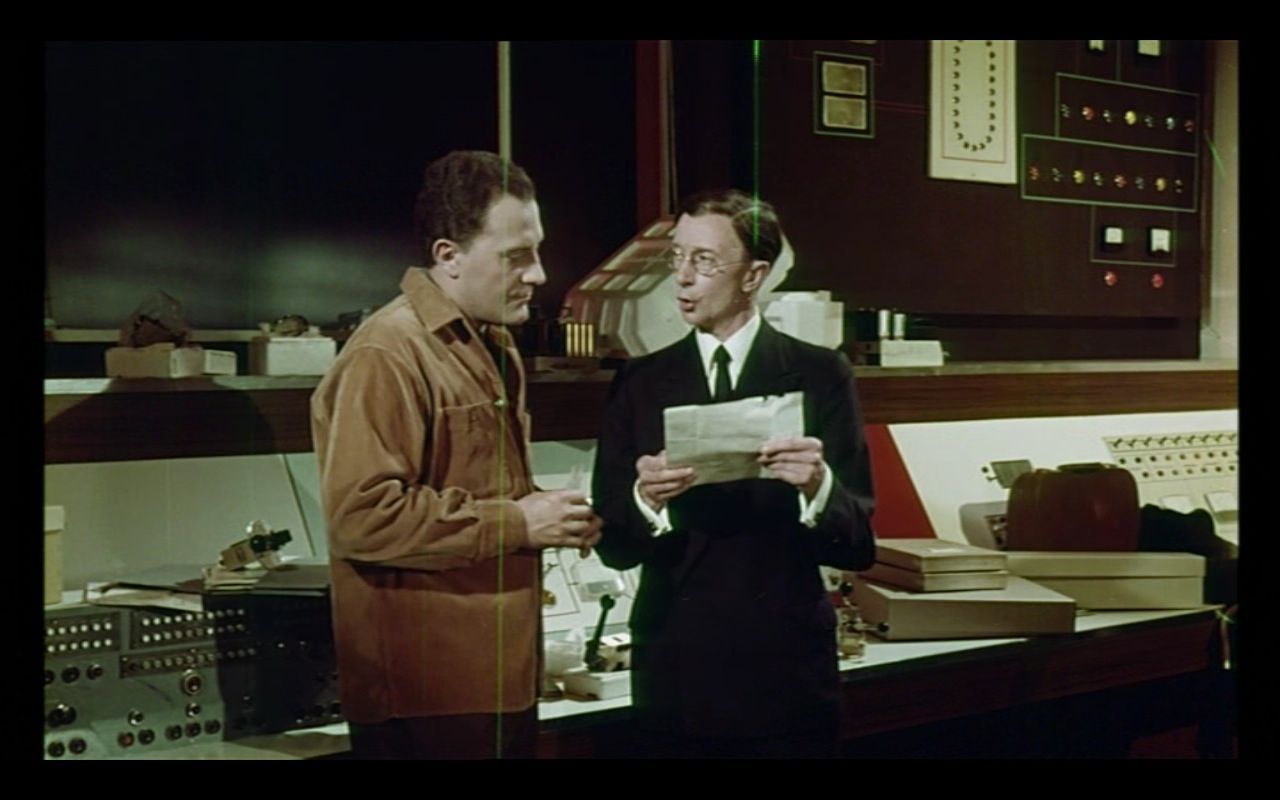 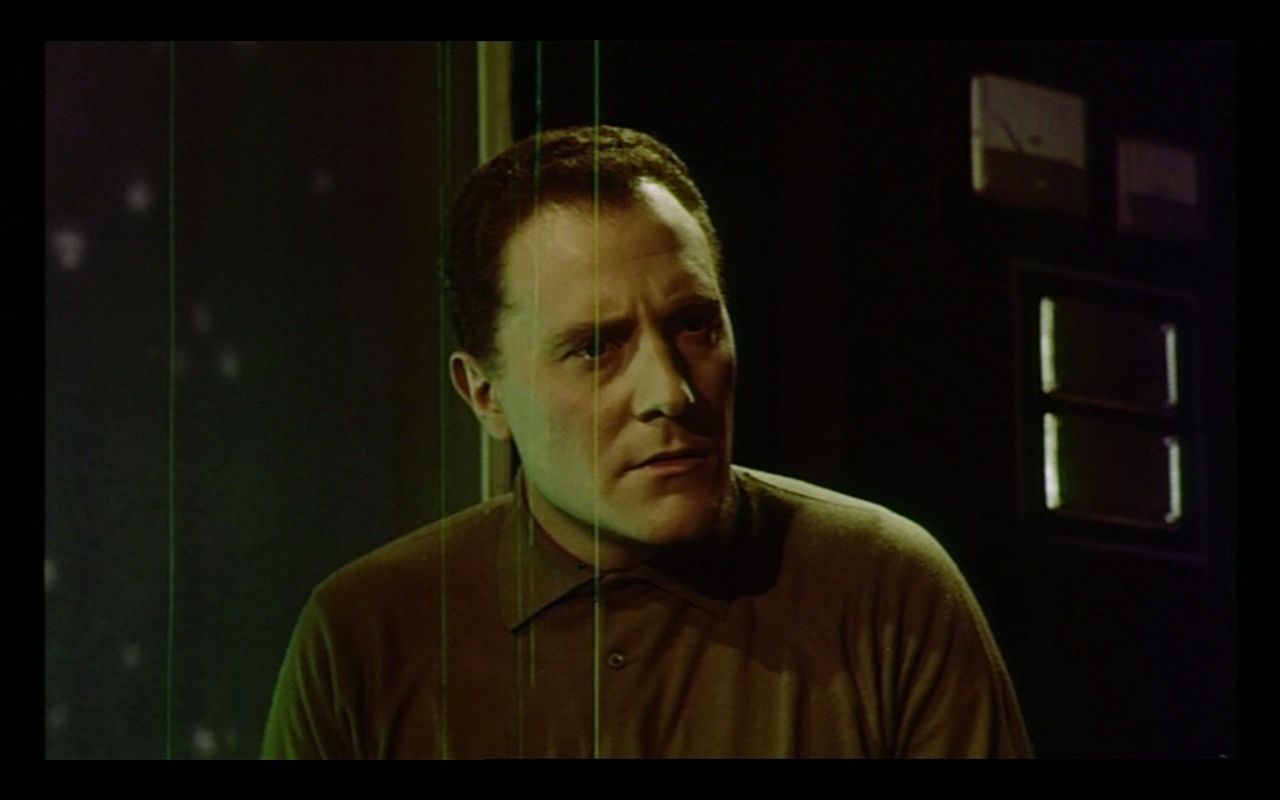
Audio
Audio on both presentations is via a two-channel mono track, which is clean and free from issues.
Extras
Aside from the longer original version of the film, the disc also includes the film’s original trailer (1:41) and a stills gallery (0:45).
Overall
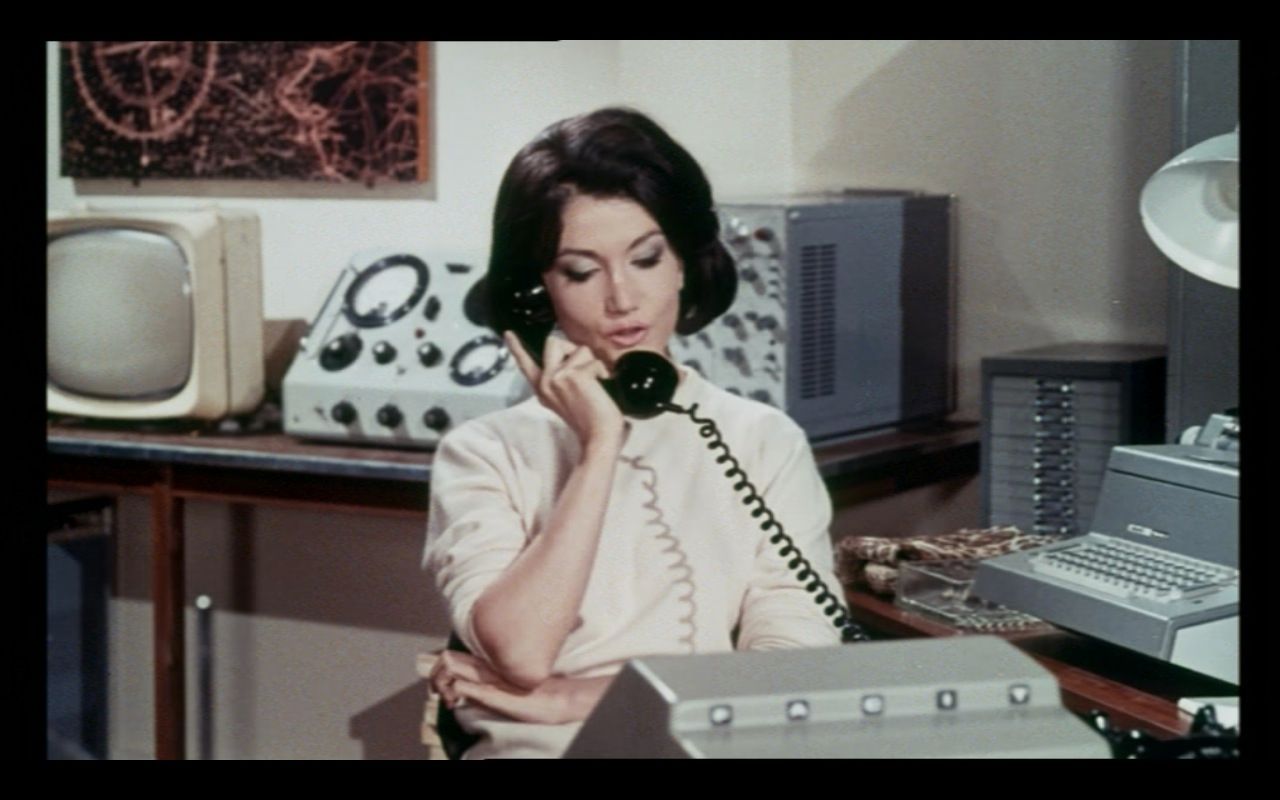 The Terrornauts is an entertaining little film, although decidedly camp. The cast work well together, but the film has some very flat and uninteresting photography. Although the opening sequences of the film suggest that The Terrornauts may develop into a treatise on scientific hubris, with Burke’s belief that the alien species is benevolent seeming to be predicated on a potentially dangerous optimism (‘They might have tentacles!’, as Yellowlees notes comically, whilst Patricia Hayes’ characyer worries that the aliens may resemble giant spiders), the narrative ultimately proves Burke to be correct: the alien species is friendly, and in fact offers the human visitors the tools with which to dispatch a more threatening race of extraterrestrials. The scientists put on hats (bathing caps) which allow them to communicate with the alien species’ weaponry remotely – much like in a video game – and destroy the attacking fleet. The Terrornauts is an entertaining little film, although decidedly camp. The cast work well together, but the film has some very flat and uninteresting photography. Although the opening sequences of the film suggest that The Terrornauts may develop into a treatise on scientific hubris, with Burke’s belief that the alien species is benevolent seeming to be predicated on a potentially dangerous optimism (‘They might have tentacles!’, as Yellowlees notes comically, whilst Patricia Hayes’ characyer worries that the aliens may resemble giant spiders), the narrative ultimately proves Burke to be correct: the alien species is friendly, and in fact offers the human visitors the tools with which to dispatch a more threatening race of extraterrestrials. The scientists put on hats (bathing caps) which allow them to communicate with the alien species’ weaponry remotely – much like in a video game – and destroy the attacking fleet.
The DVD contains two versions of the film: the shorter rerelease cut gets a very handsome presentation here, whilst the longer original cut suffers from some quite heavy damage. Nevertheless, both versions of the film are watchable. References: Francis, Freddie, 2013: Freddie Francis: The Straight Story from Moby Dick to Glory – A Memoir. Plymouth: Scarecrow Press Hunter, I Q, 2002: ‘Introduction: The strange world of the British science fiction film’. In: Hunter, I Q (ed), 2002: British Science Fiction Cinema. London: Taylor & Francis: 1-15 For more information, please visit the homepage of Network Releasing. This review has been kindly sponsored by: 
|
|||||

|